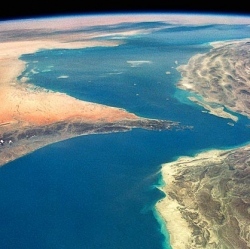
For the first time, astronomers have determined the true colour of a planet orbiting another star. The world, known as HD189733b, has a deep azure hue – probably the result of silicate (glass) rain in the atmosphere, which scatters blue light.
Details of the discovery, made with the Hubble Space Telescope, are to appear in Astrophysical Journal Letters. Although it might resemble Earth from a distance, HD189733b is a huge gas giant which orbits close to its host star.
The temperature of the planet’s atmosphere is a scorching 1,000C, and it rains glass, sideways, in howling 7,000km-per-hour winds. Its atmosphere has been found to be dramatically changeable and exotic, with hazes and violent bursts of evaporation.
At a distance of 63 light-years from us, this turbulent alien world is one of the nearest exoplanets to Earth that can be seen crossing the face of its star.
It has been extensively studied by ground- and space-based telescopes. Now, astronomers have measured its visible colour.
